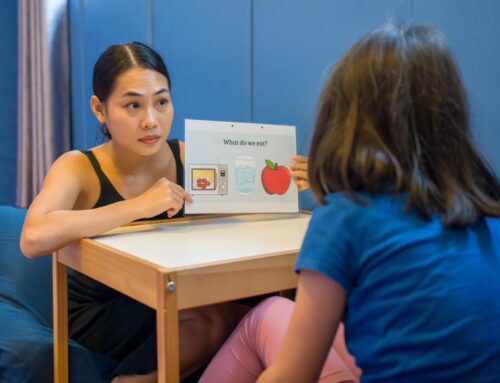A sensory-friendly classroom is designed to accommodate the needs of students with sensory sensitivities. This can include students with autism spectrum disorder (ASD), attention deficit hyperactivity disorder (ADHD), and other disabilities. Sensory sensitivities can make it difficult for students to focus and learn in a traditional classroom setting. By creating a sensory-friendly classroom, teachers can help all students succeed.
Here are some tips on how to create a sensory-friendly classroom:
Reduce clutter. Clutter can be visually and tactually overwhelming for students with sensory sensitivities. Keep your classroom clean and organized, and avoid placing too many decorations on the walls.
Use calming colors. Bright, bold colors can be overstimulating for students with sensory sensitivities. Choose calming colors for your classroom walls and furniture. You can also use lighting to create a calming atmosphere. For example, you can use natural light whenever possible, and avoid using fluorescent lighting.
Provide sensory aids. Sensory aids can help students with sensory sensitivities regulate their responses to sensory stimuli. Some examples of sensory aids include fidget toys, weighted blankets, and noise-canceling headphones.
Create a quiet area. Have a dedicated area in your classroom where students can go to calm down or have quiet time. This area should be free from distractions, such as noise and bright lights. You may want to include headphones, fidget toys, and other calming items in this area.
Be flexible with seating. Some students with sensory sensitivities may need to move around frequently. Provide your students with flexible seating options, such as bean bag chairs, wobble chairs, and standing desks.
Communicate with parents and other teachers. It is important to communicate with students’ parents and other teachers about their sensory needs. This will help ensure that the student is receiving consistent support throughout the day.
Here are some additional tips for creating a sensory-friendly classroom:
- Use predictable routines. Students with sensory sensitivities thrive on routine. Create a daily schedule of activities and post it in the classroom.
- Provide advance notice of changes. When possible, give students advance notice of any changes to the daily routine or classroom environment. This can help them prepare for and adjust to the changes.
- Be understanding. Students with sensory sensitivities may need to take breaks, move around, or use sensory aids throughout the day. Be understanding and accommodating of their needs.
If you are serious about learning, then one-on-one classes at OrbRom Center are the best way to go. Our experienced teachers will help you achieve your academic goals. Contact us TODAY.
Welcome to OrbRom Centre
Choosing learning support for your child is one of the most important decisions you will make, and I welcome you to discover more about why OrbRom is the best option in Phnom Penh.

H. Sophaneth B.Ed, M.Ed





Leave A Comment